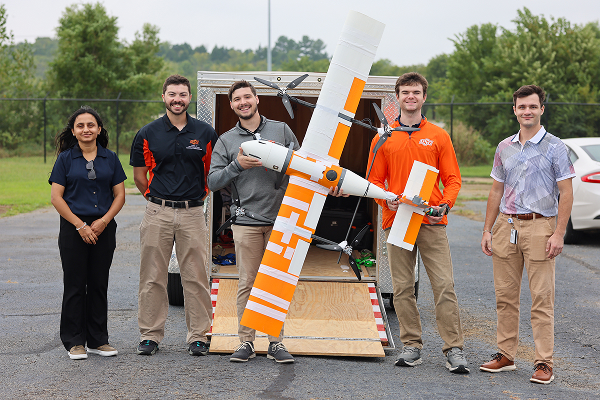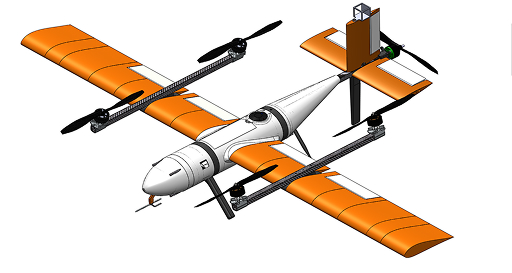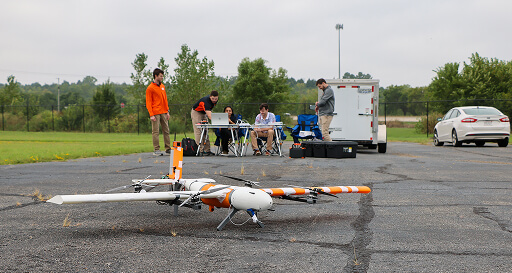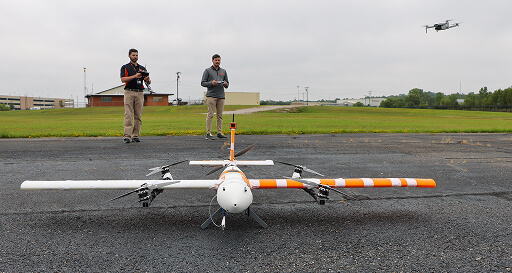Rapid Development of a Low-Cost Multi-Purpose Response Drone
This Group 2 UAS employs an LPC architecture—dedicated lift propulsors for vertical flight and a cruise propulsor for forward flight—enabling efficient VTOL-to-FF transition while preserving fixed-wing cruise performance. The airframe is largely 3D-printed to reduce cost and lead time while supporting rapid, iterative design cycles. A real-time MATLAB/Simulink simulation environment (VISTA) serves as the vehicle’s digital twin for trim analysis, model linearization, and controller design, and is integrated with hardware and visualization for seamless simulation-to-flight workflows. The flight control stack follows a modular architecture—inceptor mappings, a Trajectory Control System (TCS) middle loop, Explicit Model-Following (EMF) inner loops, and an intuitive control allocation—supporting testing across VTOL, transition, and forward-flight modes.



